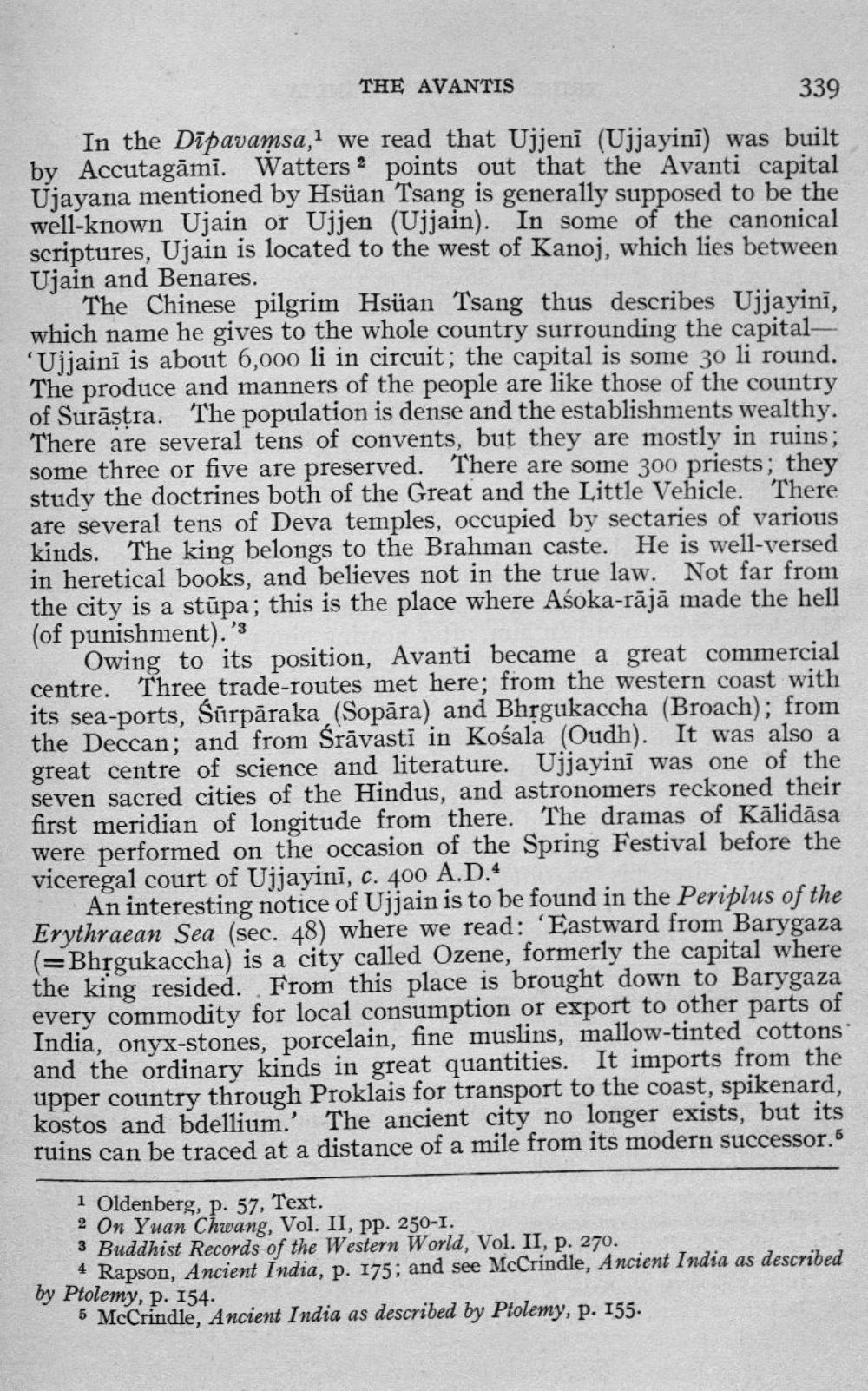________________
THE AVANTIS
339
1
In the Dipavamsa, we read that Ujjeni (Ujjayini) was built by Accutagāmi. Watters points out that the Avanti capital Ujayana mentioned by Hsüan Tsang is generally supposed to be the well-known Ujain or Ujjen (Ujjain). In some of the canonical scriptures, Ujain is located to the west of Kanoj, which lies between Ujain and Benares.
The Chinese pilgrim Hsüan Tsang thus describes Ujjayini, which name he gives to the whole country surrounding the capital'Ujjaini is about 6,000 li in circuit; the capital is some 30 li round. The produce and manners of the people are like those of the country of Suraṣṭra. The population is dense and the establishments wealthy. There are several tens of convents, but they are mostly in ruins; some three or five are preserved. There are some 300 priests; they study the doctrines both of the Great and the Little Vehicle. There are several tens of Deva temples, occupied by sectaries of various kinds. The king belongs to the Brahman caste. He is well-versed in heretical books, and believes not in the true law. Not far from the city is a stupa; this is the place where Aśoka-rājā made the hell (of punishment)."
93
Owing to its position, Avanti became a great commercial centre. Three trade-routes met here; from the western coast with its sea-ports, Surpāraka (Sopāra) and Bhrgukaccha (Broach); from the Deccan; and from Śrāvasti in Kośala (Oudh). It was also a great centre of science and literature. Ujjayini was one of the seven sacred cities of the Hindus, and astronomers reckoned their first meridian of longitude from there. The dramas of Kalidasa were performed on the occasion of the Spring Festival before the viceregal court of Ujjayini, c. 400 A.D.4
An interesting notice of Ujjain is to be found in the Periplus of the Erythraean Sea (sec. 48) where we read: 'Eastward from Barygaza (=Bhrgukaccha) is a city called Ozene, formerly the capital where the king resided. From this place is brought down to Barygaza every commodity for local consumption or export to other parts of India, onyx-stones, porcelain, fine muslins, mallow-tinted cottons and the ordinary kinds in great quantities. It imports from the upper country through Proklais for transport to the coast, spikenard, kostos and bdellium.' The ancient city no longer exists, but its ruins can be traced at a distance of a mile from its modern successor.5
1 Oldenberg, p. 57, Text.
2 On Yuan Chwang, Vol. II, pp. 250-1.
3 Buddhist Records of the Western World, Vol. II, p. 270.
4 Rapson, Ancient India, p. 175; and see McCrindle, Ancient India as described by Ptolemy, p. 154.
5 McCrindle, Ancient India as described by Ptolemy, p. 155.




